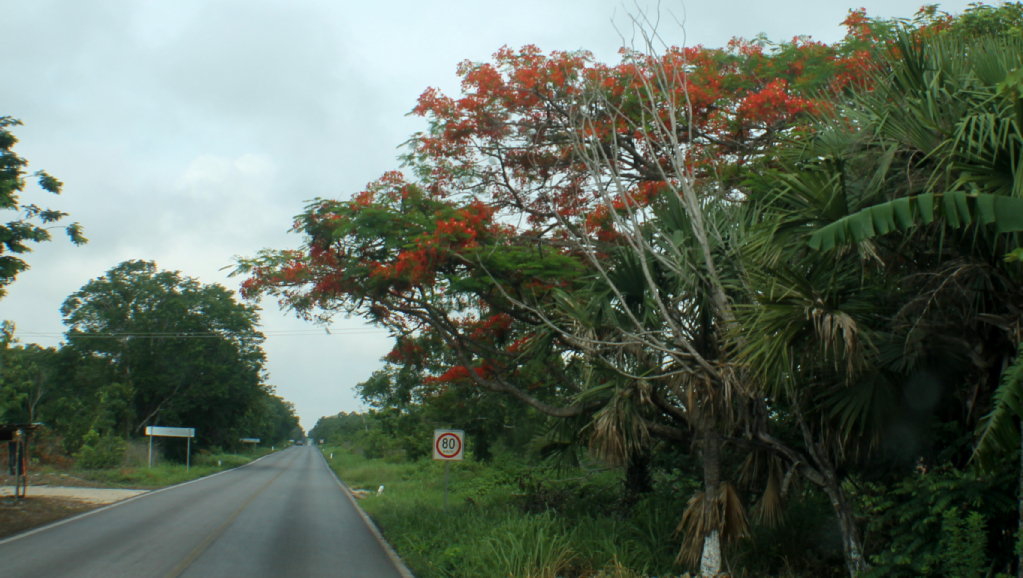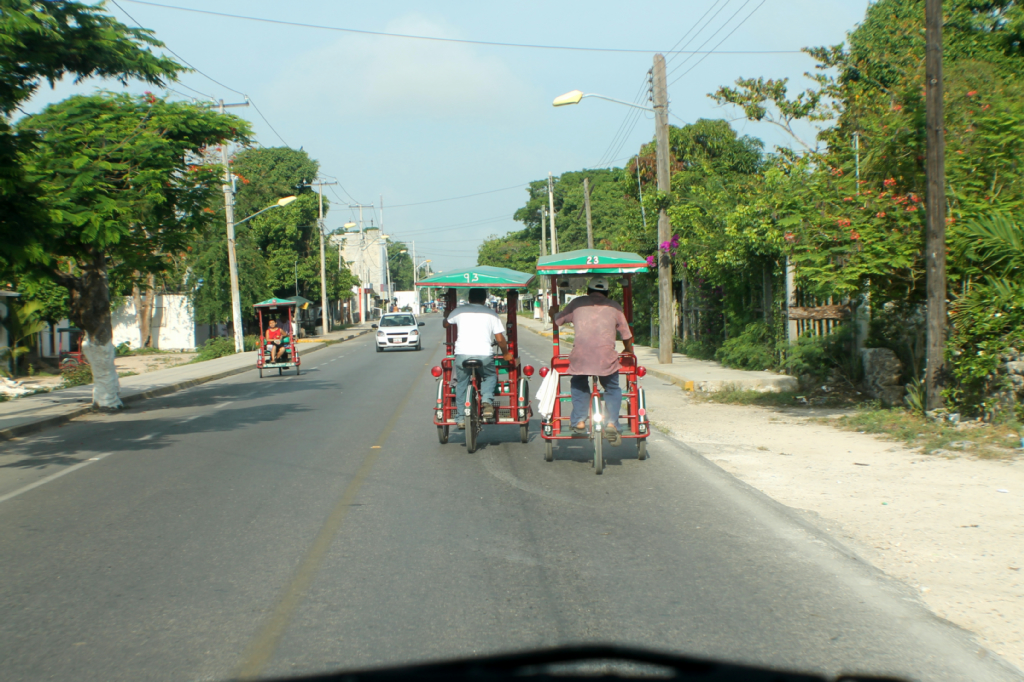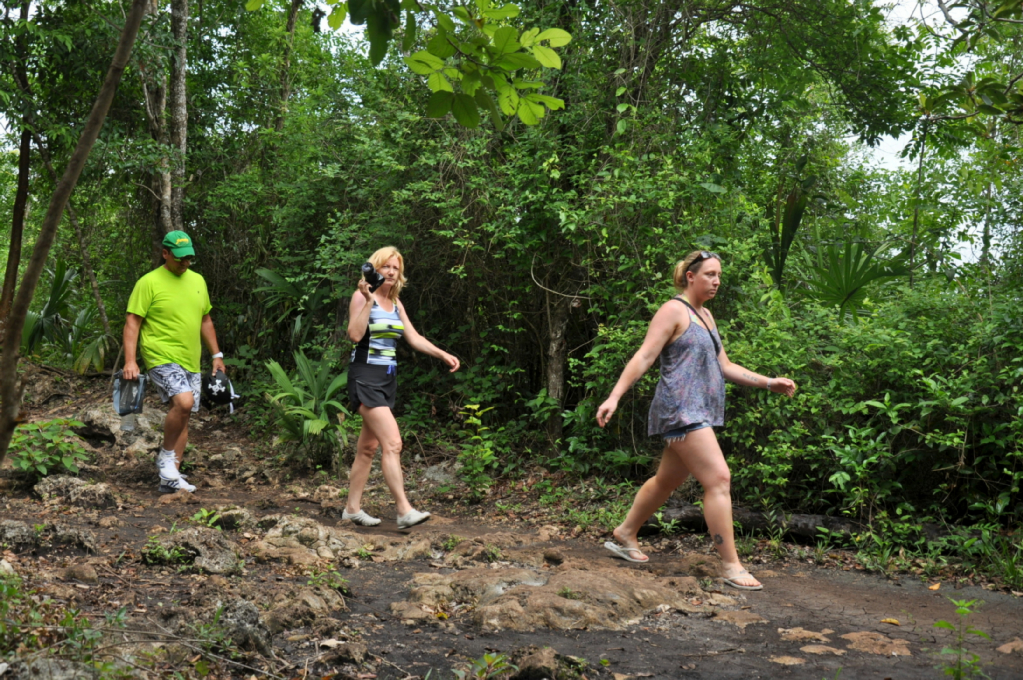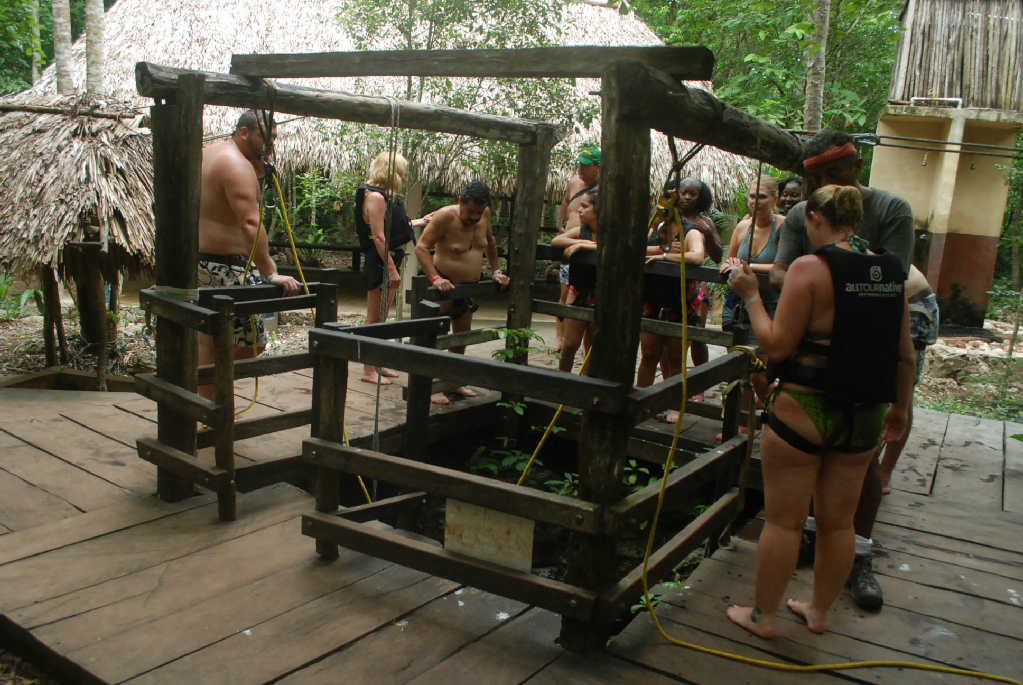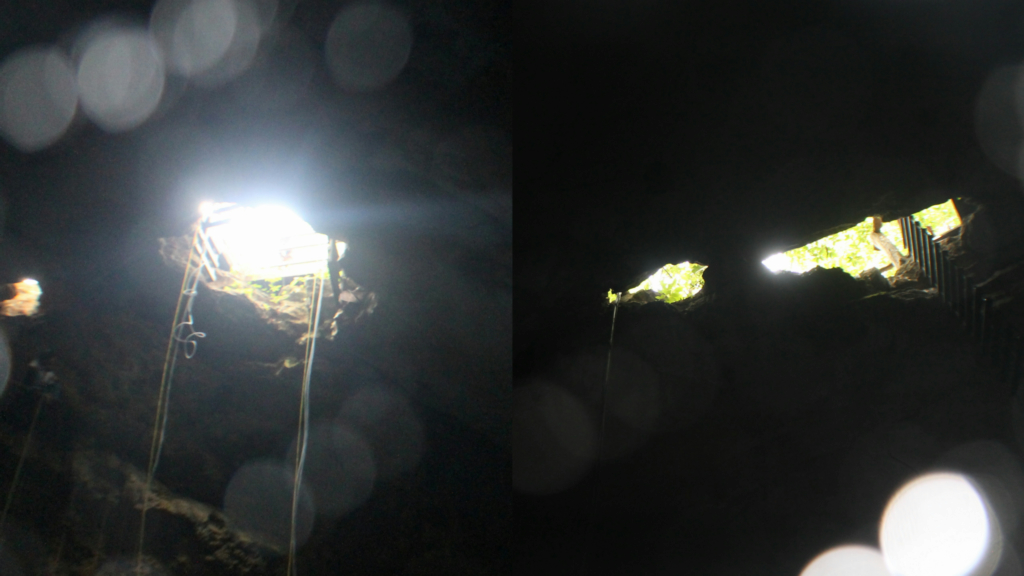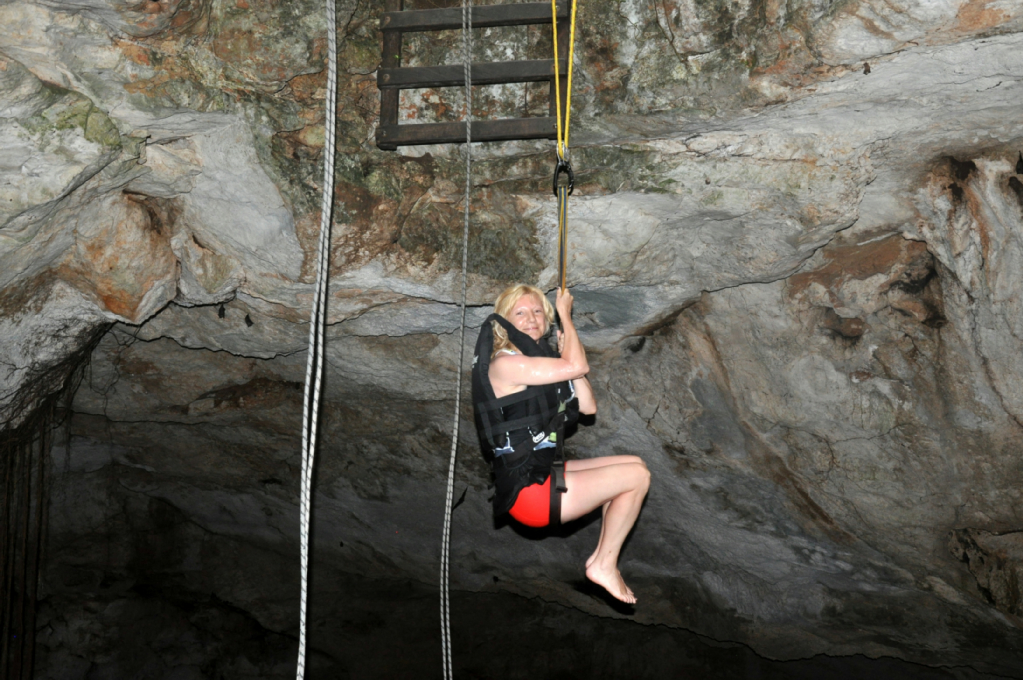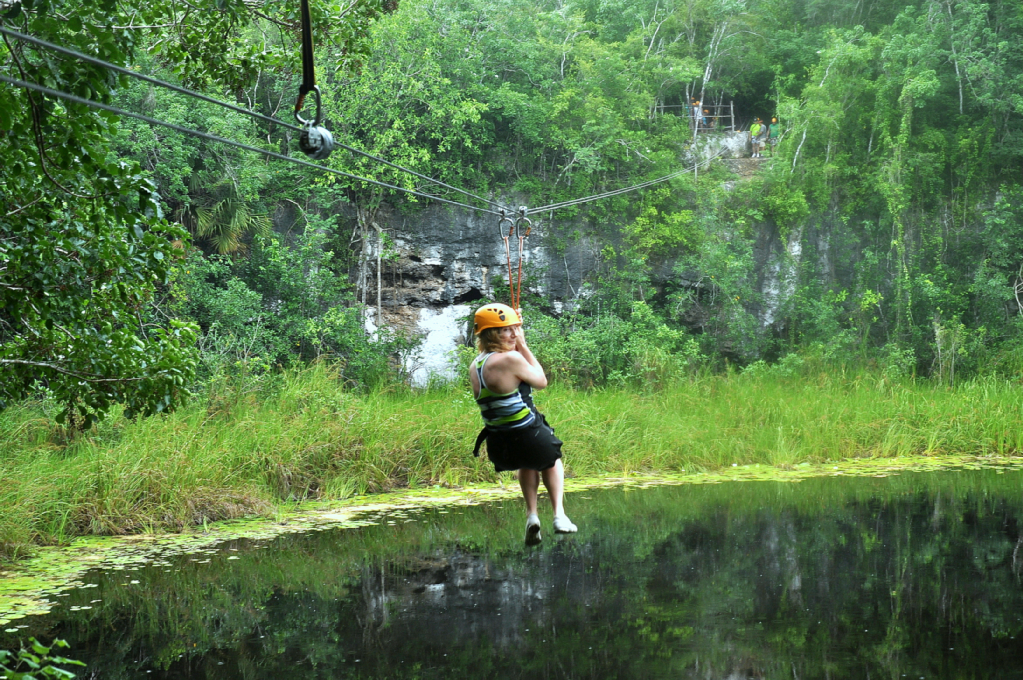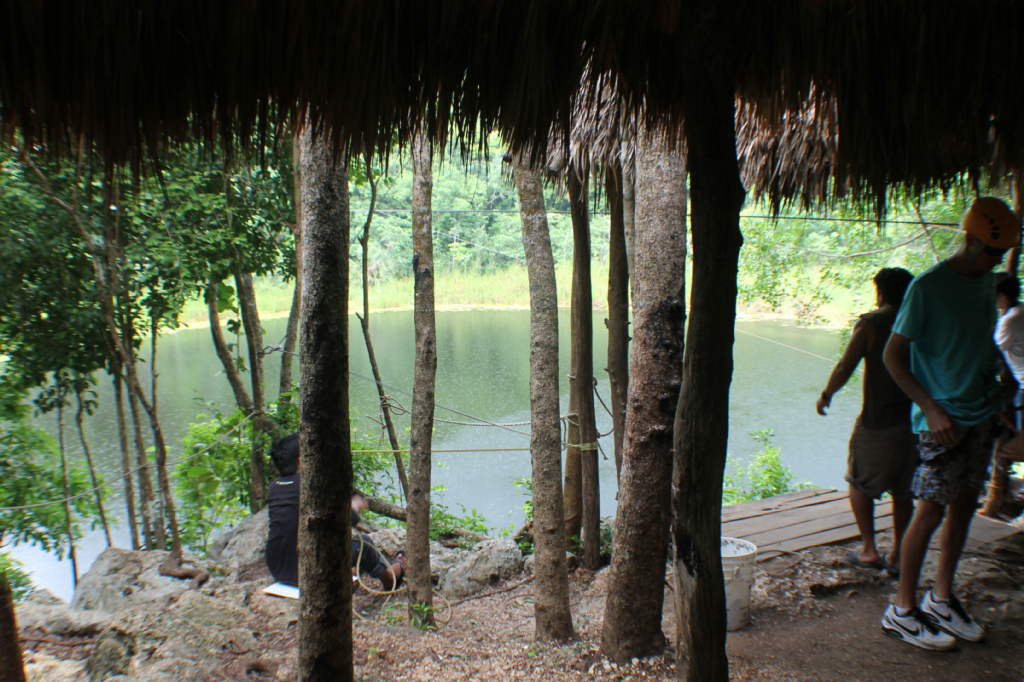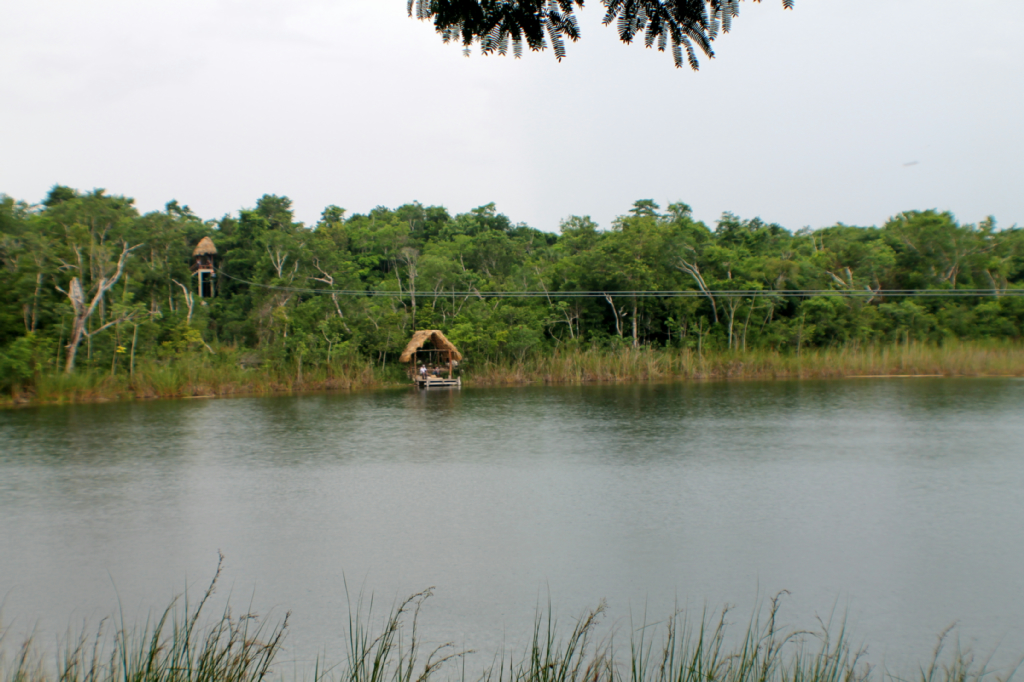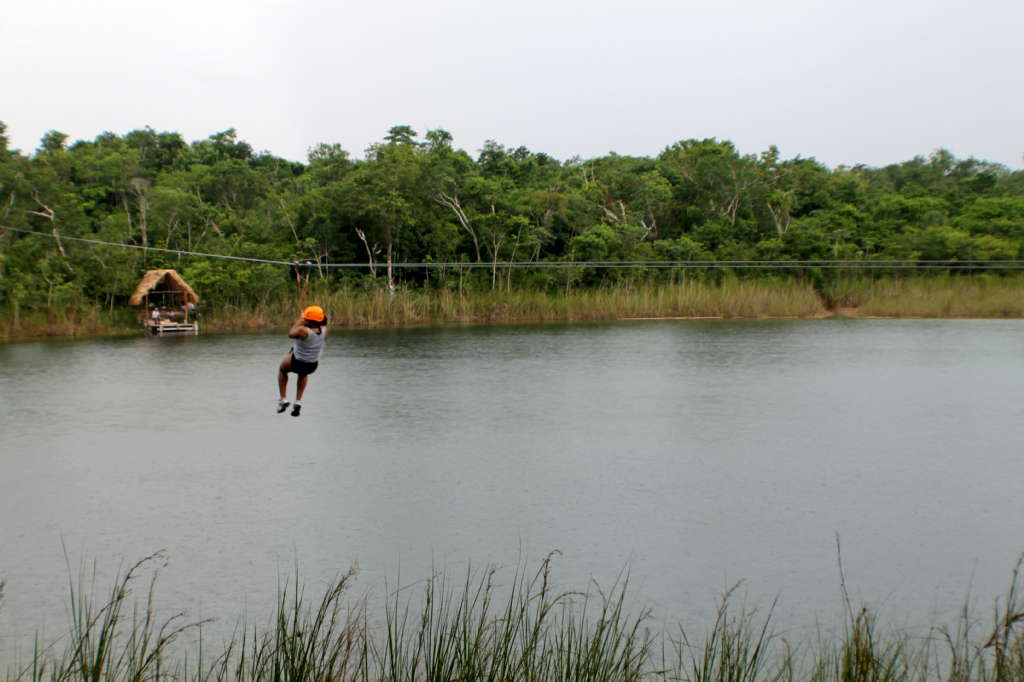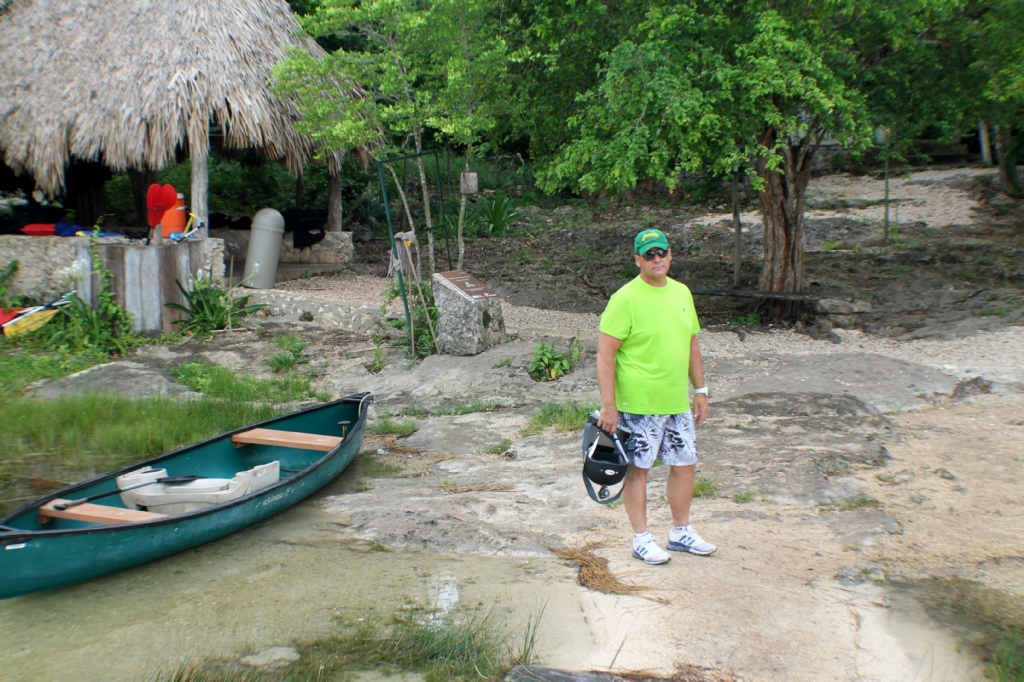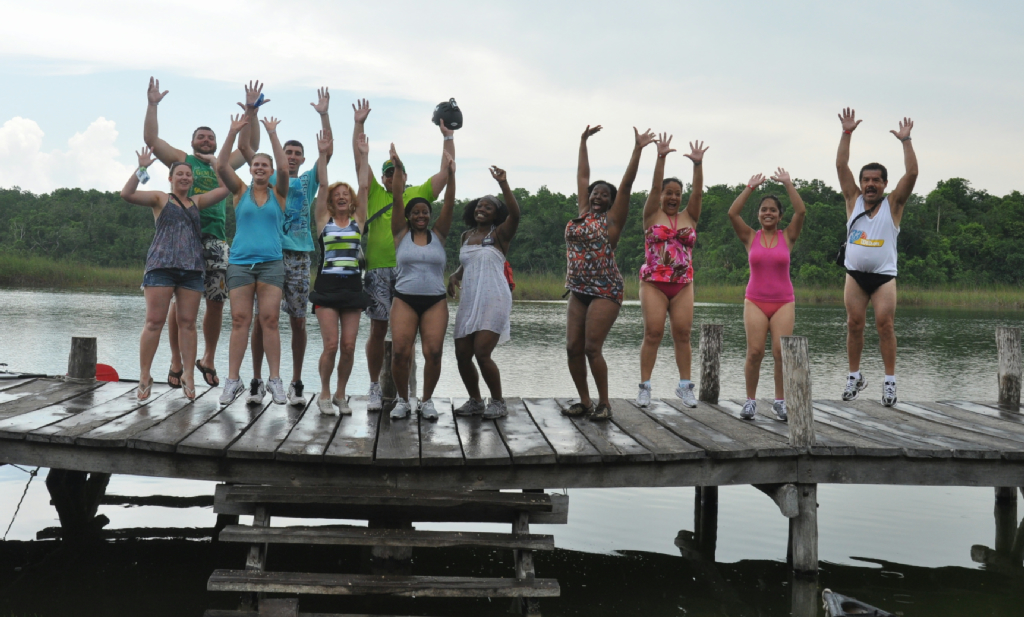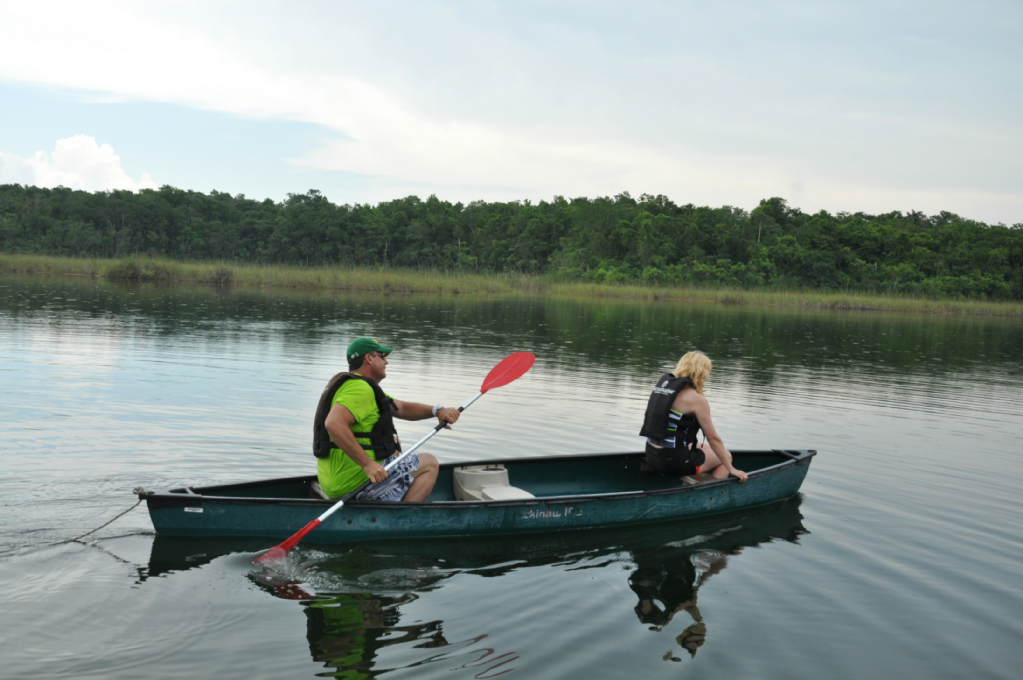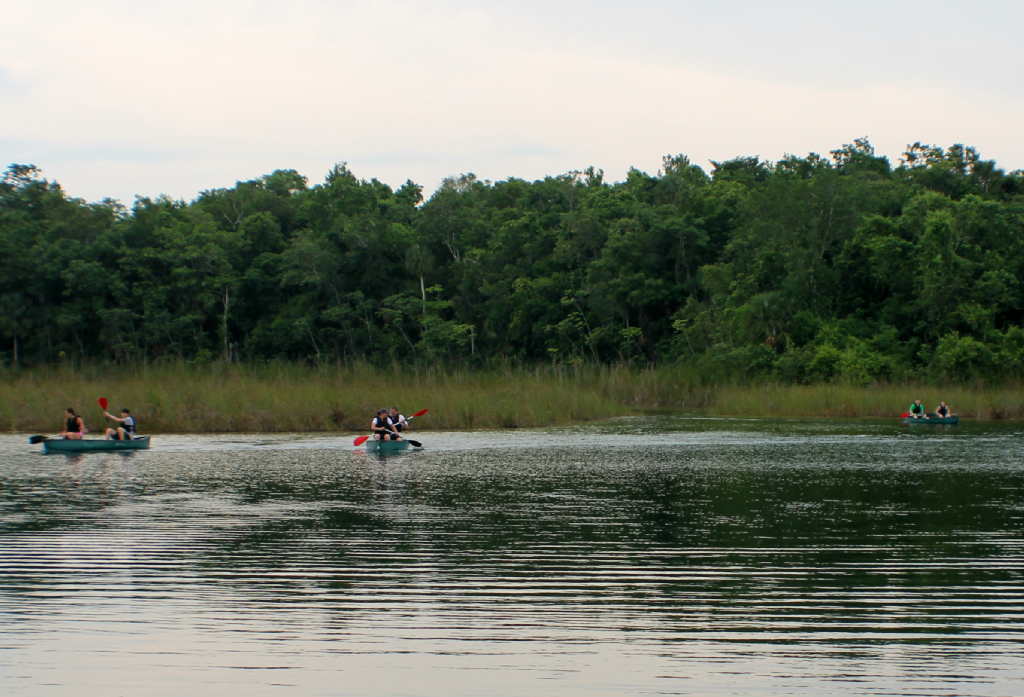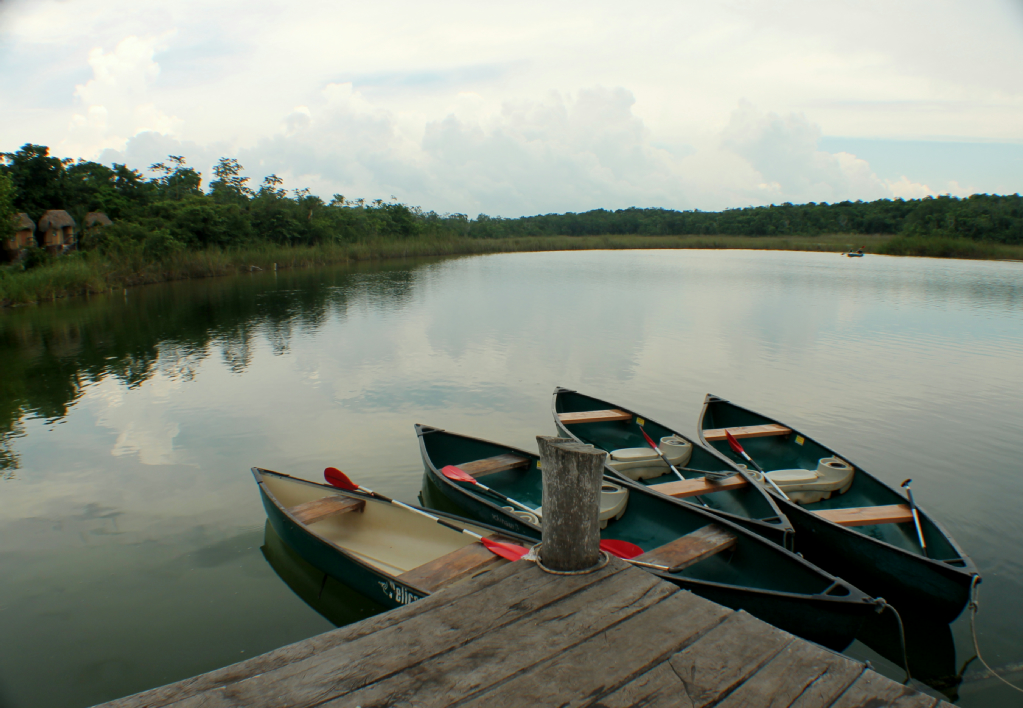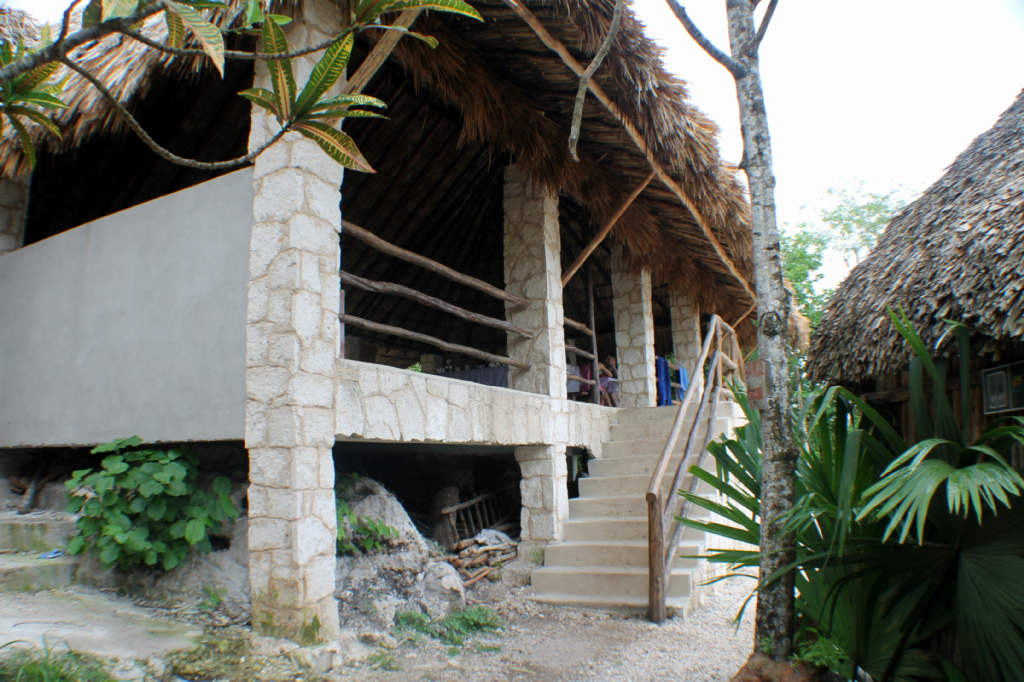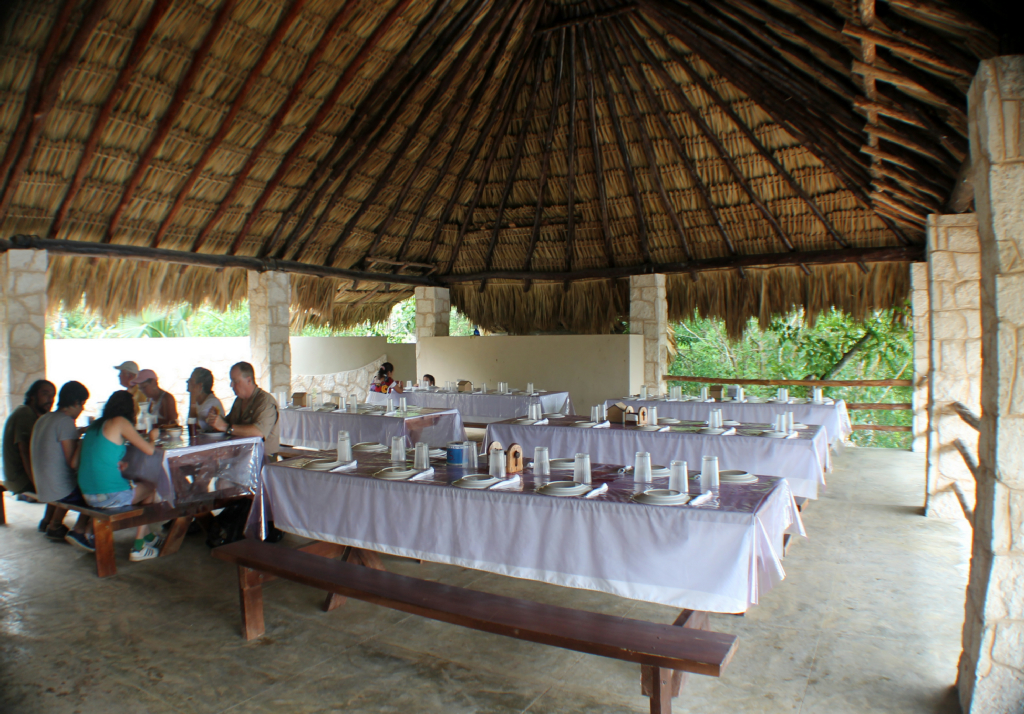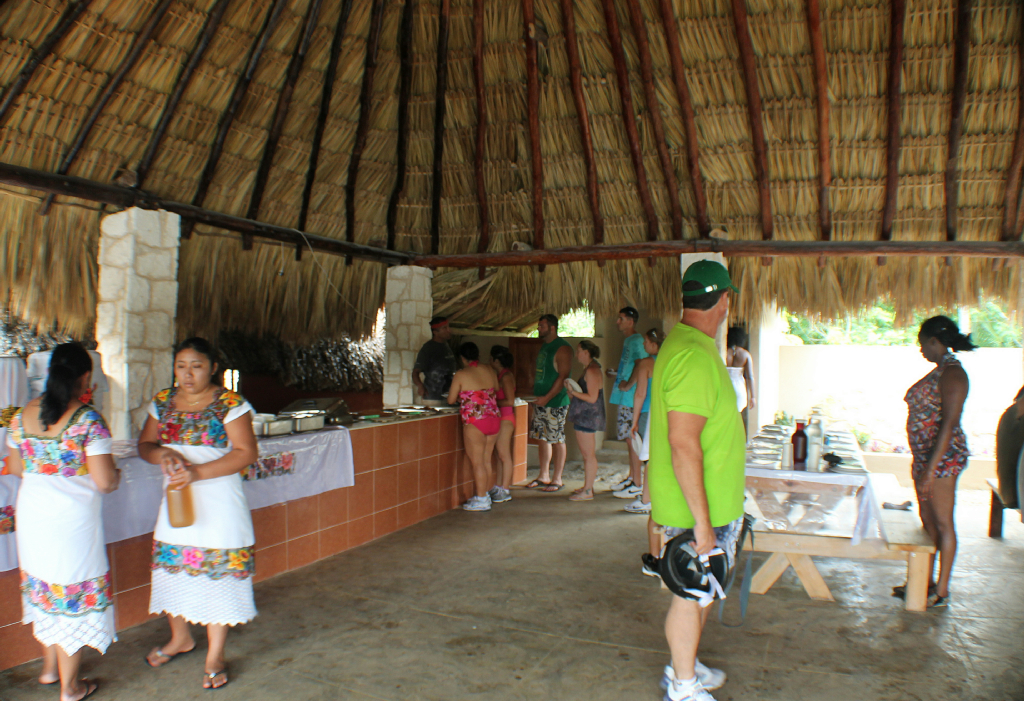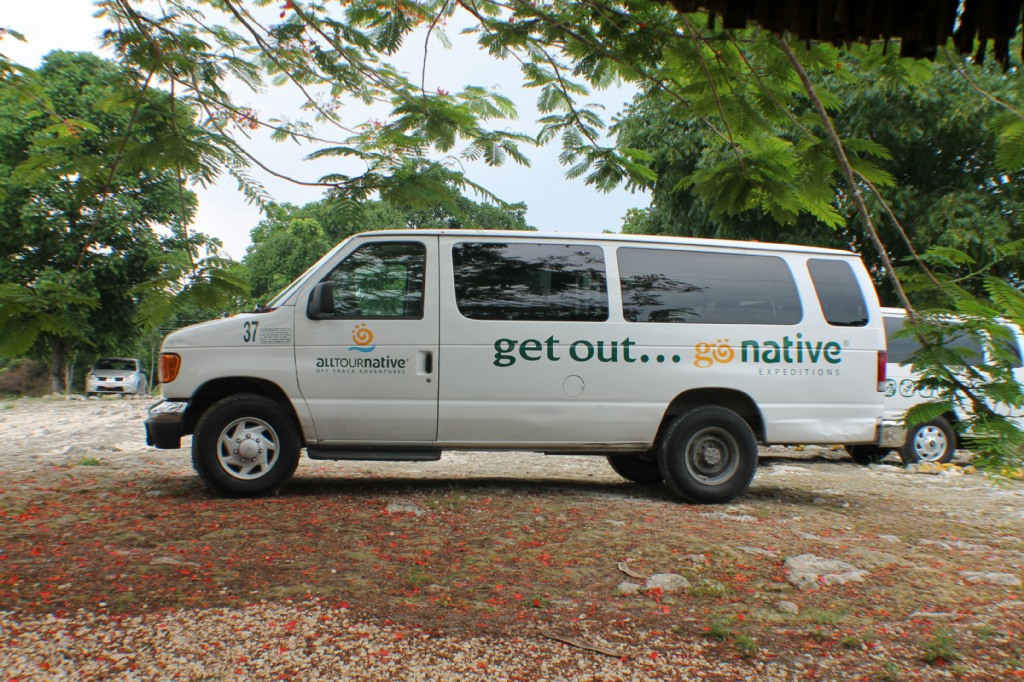 Early in the morning we were taken by the minivan to experience the Coba Maya Encounter Expedition tour. We were planning to arrive at the authentic Mayan village of Pac-Chen, a self sufficient community of approximately 125 people who still live in round thatch huts deep in the jungle. There’s no electricity or indoor plumbing, and the roads aren’t paved. The inhabitants, who primarily make their living farming pineapples, beans, and plantains, still pray to the gods for good crops.
Early in the morning we were taken by the minivan to experience the Coba Maya Encounter Expedition tour. We were planning to arrive at the authentic Mayan village of Pac-Chen, a self sufficient community of approximately 125 people who still live in round thatch huts deep in the jungle. There’s no electricity or indoor plumbing, and the roads aren’t paved. The inhabitants, who primarily make their living farming pineapples, beans, and plantains, still pray to the gods for good crops.
The first half of the day included:
- Rappelling into a cenote
- Riding a zip-line
- Canoeing
- Lunch in the authentic Mayan village
After lunch the plan was to visit the ancestral city of Coba, an archaeological site hidden deep inside the jungle. It will be in the next post as Part 2 of Cancun Day 3 – Coba Encounter Expedition.
Here are a couple pics from the minivan’s window on the way to the Mayan Village Pac-Chen.
We arrived at Pac-Chen around 9:00 am. These cute changing cabins were offered to us.
After that we had about a 20 minute walk through the jungle to our next destination – “Jaguar Cenote” for rappelling.
Our tour guide pointed out some interesting facts about the plants and the trees around us. He said to be careful what we touched, because the sap of some trees would burn our skin. Pictured below is the Black Poison-wood tree or Chechen/Chechem by it’s Mayan name. It has a very powerful defense mechanism against people in the form of highly irritating sap, which creates a rash and burns when it comes in contact with human skin. It is very similar to Poison Ivy. The bark of the Black Poison-wood tree has this black stuff – sap, which comes clear out of the tree, but then it turns black because of the exposure to oxygen. You don’t want to touch it! The black spots are visible on the bark of the tree on the picture below. Leaves of the tree can be poisonous too. Although this tree produces beautiful decorative wood used for carving, furniture etc., it is expensive due to the high risk in harvesting it.
The good news is there is almost always a natural antidote tree grows around the Chechen tree. It is the Gumbo Limbo tree, which is pictured on the left. It is recommended to clean the area, that was in contact with the Chechen tree, with any oil dissolving substance and to apply a piece of the Gumbo Limbo bark on the affected area several times. The Gumbo Limbo tree sap relieves rashes and burns.
Before rappelling into a cenote Mayan shaman performed a purification ritual for us. Below is a short video of the ritual.
We were getting ready to rappel into clear fresh waters down 45 ft./17mts into the cave-like “Jaguar Cenote”. The cenote is named Jaguar because of the way the light plays on the top of the cave, looking like the spotted coat of a jaguar.
We used ropes to get down the cenote.
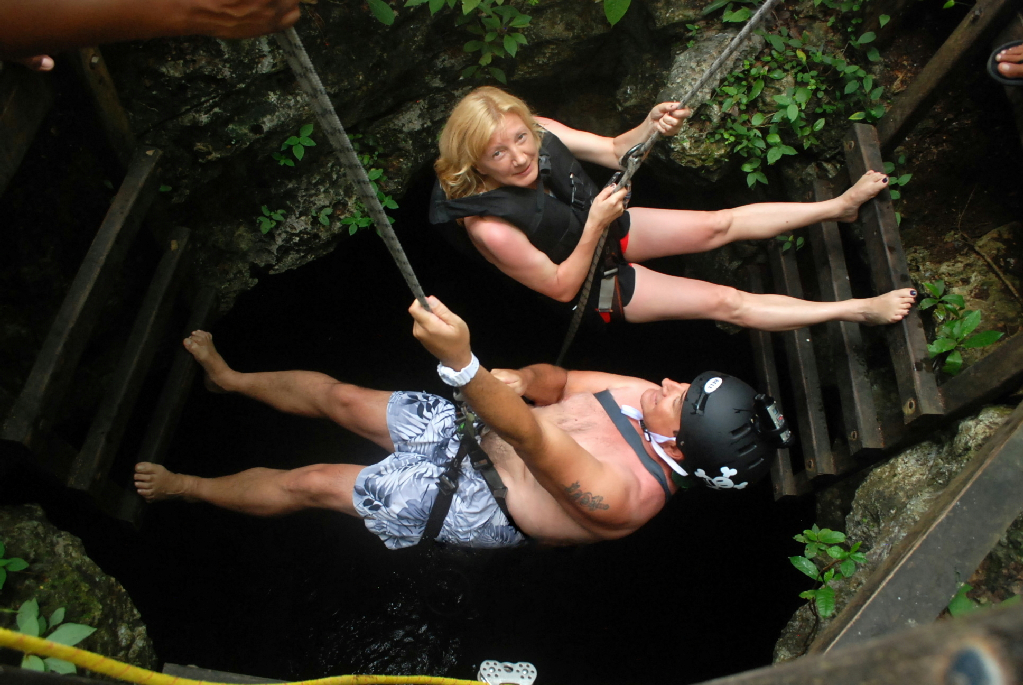
It was really dark down there. Nothing to see. We were floating on inner tubes.
The view from inside of the cenote. The surface on the top of the cave resembles a little the spotted coat of a jaguar, especially on the enlarged picture.
On the way up we used a “Mayan elevator” – somebody on the top pulled us out. 🙂
Here is a short video of our rappeling to the cenote from the helmet camera. The best resolution to watch it is at 720p HD or higher.
Next, we had a couple of zip lines to ride.
We arrived at the “Cayman Cenote” for the next zip-line crossing. Here we were harnessed to the zip-line strung 300 ft/100mts over an open (to the air) cenote that is surrounded by pristine jungle vegetation.
Beautiful cenote…
Here is a short video of Dave’s zip line ride over “Cayman Cenote”. The best resolution to watch it is at 720p HD.
We arrived at the Mojarras Lagoon for canoeing. It was mandatory to ware a life jacket.
A group picture. Per our tour guide’s advice, we had to jump, so we jumped. 🙂
It was my very first time canoeing. In the beginning Dave was paddling by himself, but then I joined him. It wasn’t hard at all, especially in the incredibly calm water of the lagoon.
So peaceful…
After canoeing we headed for lunch, which was at the Mayan village 5 minutes away.
We had lunch under an open-air palapa overlooking Mojarras lagoon, where we rode the canoes. Here is the entrance.
Lunch was wonderful. Selection wasn’t large, but everything was very tasty and freshly made by Mayan women from the village. The menu included: chicken cooked with the traditional Mayan ingredients, rice, beans, potatoes, hand made tortillas and others.
We had some coffee and cookies next to the office, while waiting for our picture CDs.
Our minivan was waiting to take us on the trip to the ancient city of Coba.
To be continued…
